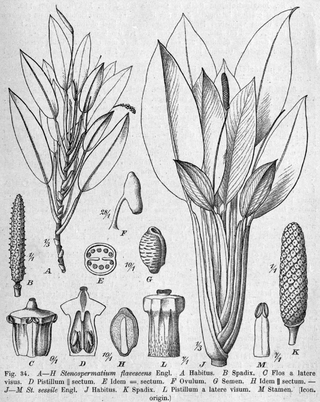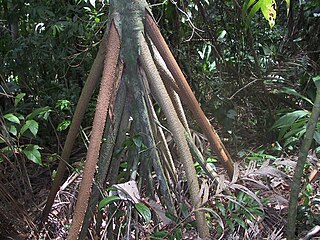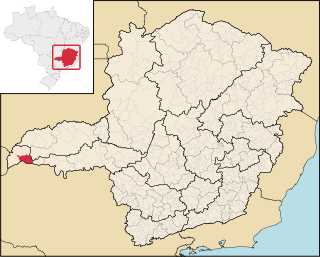
Madison County is a county located in the U.S. state of New York. As of the 2020 census, the population was 68,016. Its county seat is Wampsville. The county is named after James Madison, the fourth president of the United States, and was first formed in 1806.

Madison County is a county located in the north central portion of the state of Florida, and borders the state of Georgia to the north. As of the 2020 census, the population was 17,968. Its county seat is also called Madison.

Fort Madison is a city and a county seat of Lee County, Iowa, United States along with Keokuk. Of Iowa's 99 counties, Lee County is the only one with two county seats. The population was 10,270 at the time of the 2020 census. Located along the Mississippi River in the state's southeast corner, it lies between small bluffs along one of the widest portions of the river.

Paraná is one of the 26 states of Brazil, in the south of the country. It is bordered in the north by São Paulo state, in the east by the Atlantic Ocean, in the south by Santa Catarina state and the province of Misiones, Argentina, and in the west by Mato Grosso do Sul and Paraguay, with the Paraná River as its western boundary. It is subdivided into 399 municipalities, and its capital is the city of Curitiba. Other major cities are Londrina, Maringá, Ponta Grossa, Cascavel, São José dos Pinhais and Foz do Iguaçu. The state is home to 5.4% of the Brazilian population and generates 6.2% of the Brazilian GDP.

Janesville is a city in Rock County, Wisconsin, United States. It is the county seat and largest city in the county. It is a principal municipality of the Janesville, Wisconsin, Metropolitan Statistical Area and is included in the Madison–Janesville–Beloit, WI Combined Statistical Area. As of the 2020 census, the city had a population of 65,615.

Chusquea is a genus of evergreen bamboos in the grass family. Most of them are native to mountain habitats in Latin America, from Mexico to southern Chile and Argentina.

Xanthosoma is a genus of flowering plants in the arum family, Araceae. The genus is native to tropical America but widely cultivated and naturalized in other tropical regions. Several are grown for their starchy corms, an important food staple of tropical regions, known variously as malanga, otoy, otoe, cocoyam, tannia, tannier, yautía, macabo, ocumo, macal, taioba, dasheen, quequisque, ʻape and as Singapore taro. Many other species, including especially Xanthosoma roseum, are used as ornamental plants; in popular horticultural literature these species may be known as ‘ape due to resemblance to the true Polynesian ʻape, Alocasia macrorrhizos, or as elephant ear from visual resemblance of the leaf to an elephant's ear. Sometimes the latter name is also applied to members in the closely related genera Caladium, Colocasia (taro), and Alocasia.

Caladium is a genus of flowering plants in the family Araceae. They are often known by the common name elephant ear, heart of Jesus, and angel wings. There are over 1000 named cultivars of Caladium bicolor from the original South American plant.

Schinus terebinthifolia is a species of flowering plant in the cashew family, Anacardiaceae, that is native to subtropical and tropical South America. Common names include Brazilian peppertree, aroeira, rose pepper, broadleaved pepper tree, wilelaiki, Christmasberry tree and Florida holly. The species name has been very commonly misspelled as ‘terebinthifolius’.

Olacaceae is a family of flowering plants in the order Santalales. They are woody plants, native throughout the tropical regions of the world. As of July 2021, the circumscription of the family varies; some sources maintain a broad family, others split it into seven segregate families.
Austin R. Mast is a research botanist. Born in 1972, he obtained a Ph.D. from the University of Wisconsin–Madison in 2000. He is currently a professor within the Department of Biological Science at Florida State University (FSU), and has been director of FSU's Robert K. Godfrey Herbarium since August 2003.

Stenospermation is a genus of plant in family Araceae native to South America and Central America.

Socratea is a genus of five species of palms found in tropical Central America and South America.

Iturama is a municipality with a total area of 1,401 km² in the center-west of the Brazilian state of Minas Gerais. In 2020 the population was estimated at 39,690. It became a municipality on 27 December 1948.

Aroideae is a subfamily of flowering plants in the family Araceae. It is the largest subfamily in Araceae and consists of about 72 different genera, and 2,300 species. Many Aroideae have spiny pollen grains without a sporopollenin outer exine layer and lacking an aperture.
Bognera is a monotypic genus of flowering plants in the family Araceae. The single species that makes up the genus is Bognera recondita. The word recondita means "hidden" referring to the fact that the plant is only found in remote areas of Amazonian Brazil near the Peruvian border. The species was discovered in the late 1970s and was originally placed in the genus Ulearum, as Ulearum reconditumMadison, Aroideana 3: 101 (1980).

Ulearum sagittatum is a species in the family Araceae. It is endemic to western Brazil and Peru, where it grows on the forest floor from small rhizomes. Its binomial name refers to the sagittate, meaning arrowhead-shaped, form of its leaves.
Ernst Heinrich Georg Ule was a German botanist and plant collector.

The Federal University of Acre is a Brazilian university with headquarters in Rio Branco, Acre.
Ulearum donburnsii is a species of plant in the family Araceae. Native to the Amazonian lowlands of Ecuador, it can be distinguished from its relative Ulearum sagittatum by the finer, thread-like staminodes on its spadix. It has arrowhead-shaped leaves and grows terrestrially from small rhizomes. The species was described in 2003 and named for Don Burns, a noted grower of aroids and a member of the International Aroid Society.
















